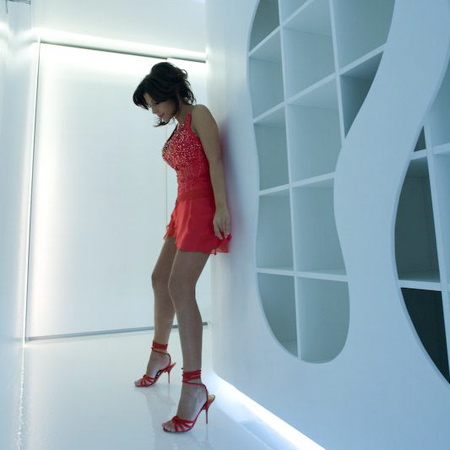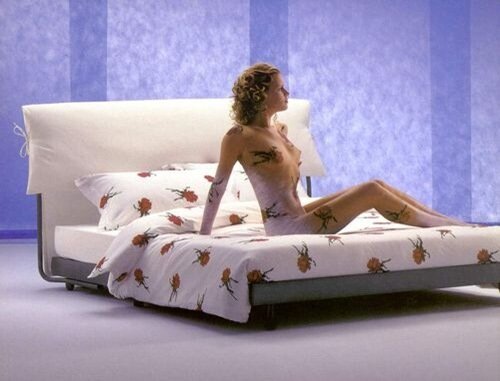I hope you had a wonderful Memorial Day weekend! I made a little bit of progress on the kitchen, but otherwise we just enjoyed having hubby home for four days straight!
School’s out for summer!! ;) Whoohoo!
If you’ve read this blog for 2.1 seconds, you know how much I luuurve spray paint. In my humble opinion, there is no cheaper way to transform accessories and furniture.
And floor vents.
And roman blinds.
And plates.
Just about anything folks. Believe you me. :)
Today I worked on a couple of spray paint projects for the kitchen that I wanted to show you. And while I was at it, I figured I would answer some of your most often asked spray paint questions.
I’ve had this large tray from Goodwill forever – almost ten years I think?:
I sprayed it in black spray paint, then later I added a vinyl monogram to it. Since I am redoing the kitchen and lightening things up a bit, I thought I would give it a little spray paint update!
I took off most of the vinyl but left just a bit, then sprayed it in an apple green spray paint (from Home Depot). After it dried, I peeled the vinyl off and left the black underneath:
It will most likely not stay as is -- it’s very very apple, and the coverage isn’t great, so I may to something to tone it down a bit. :) Maybe some distressing? We will see! I’m rearranging the tops of the cabs, but for now it sits next to a clearanced Pottery Barn bird cage – isn’t that adorable?
Which brings me to one of the FAQ spray paint questions:
Q: Which brand/type of spray paint works best?
A: I use black and white dollar spray paint (from various places – WalMart, Home Depot, Meijer, Lowe’s) all the time and it works great! Usually it just comes in glossy and matte, (shiny and not shiny) and it doesn’t cover quite as well as the more expensive stuff.
If you are working on something that already has a base coat, or something small, the cheap stuff will work just fine. If it’s furniture, plastic, outdoor equipment, etc. – use the nicer paint made for that.
Because I’m involved in the Amex spring home makeover initiative (yippeee!), I am redoing our kitchen with Membership Reward Points – and wooeee, it’s been fun! (I’ll give you another update later this week!) Today I got a new chandelier for over the kitchen table.
I really loved our old light, (which was a $30 Lowe’s score!), but I had hung it just a bit high, and it always felt just a teeny bit small for the table:
So today I was able to purchase a purdy new fixture for the space:

**I have no idea what “visual substance” means. But it sounded good. ;)
I taped off the lights, then hung the fixture from a hook out in the garage (I took down hubby’s lawn trimmer to do so) and then used nails to secure an old sheet on the wall behind it.
Which brings me to a couple more questions I get a lot:
Q: Where do you spray paint in the different seasons?
A: In the spring/summer/fall that’s easy – usually in the backyard or on the deck. Usually I can be found holding an item out at arm’s length, over the edge of the deck, spraying away. Then I’ll just lay it on the railing to dry.
I keep old sheets around that I use as drop clothes when I paint, but most often I use them on the garage floor to spray paint. A few many, many times hubby has come home to a slew of items drying on his side of the garage floor. Which I know thrills him to no end. ;)
In the winter, I have been known to spray paint in the basement – but I do quick, light sprays, then leave immediately. Usually anymore, I do my winter painting in the garage.
Q: Do I need to prep my surfaces for spray paint?
A: Other than thoroughly cleaning an item, honestly I don’t prep much. :) If it’s bare wood, a spray primer is a really good idea. You’ll prime the surface and use way less spray paint in the end.
On wood items, sometimes I will do a light sanding to prepare the surface – but most of the time I don’t. On metal, I usually just spray directly on the surface, but if it’s something that will get a lot of handling, I definitely prime it first. I have sprayed many metal lamps and did not prime because (the bases) don’t get touched much.
Same goes for light fixtures – I mean, how often do you touch them? At least around here, it’s not much. :)
So for the kitchen fixture, I didn’t prime. I did light, quick sprays and worked my way around the light as it hung. I LOVE the way it turned out!:
It’s got loverly, graceful lines:

Visual substance and all. ;)
I’m thinking of an update for the shades – you know I can’t leave well enough alone!
The Krylon oil rubbed bronze paint I used dried super fast, even out in the freaking-insane-I’m-sweating-just-standing-here-heat we had today, but you need to be sure to let anything you spray paint cure (dry) long enough before you handle it.
Because I’m insanely impatient, I waited till this fixture was dry to the touch and then started installing. Because of that, there were a few little scratches here and there after I got it up.
I just threw the sheet over the kitchen table and sprayed little touch ups. I don’t recommend doing this unless you really have yours spaces covered. But I am me and me is crayyyyzay! :)
So if your project doesn’t go just right, what do you do?
Q: How do I fix bubbles/crackling/drips/oopsies?
A: Imperfections usually mean one of two things – either you didn’t prep properly so the paint isn’t adhering well, or you are spraying too much, too fast. Drips always mean you’ve used too much. To correct those, wipe them off immediately if you can, then spray over. If you notice them later, sand it down lightly and spray again.
Same goes for crackling. Whenever I see that it means I haven’t prepped well. Sometimes I’ve noticed crackles when I’m using spray paint that has been in the heat or the item I’m spraying has been in the heat.
Crackle can be harder to cover – so sand down as much as possible and spray again.
If you follow these tips, you should get a finished product that will last you for years!:
You can transform just about anything with a can of spray paint! For a few bucks you can spray outdoor furniture, plastic stuff, furniture (I usually only recommend spray paint for smaller pieces – otherwise it gets expensive!), baskets – whatever!
Light fixtures are one of my favorite items to use spray paint on – you can make a builder grade shiny brass light look fantabulous with a $6 can of spray paint!
And anymore your color choices are endless -- the metallic options are great too. You know how I love the ORB, but I also used brushed nickel all over the Bub’s big boy room and I LOVED it:
The possibilities are truly endless – I’ve seen some of the most outdated, hideous “befores” become some amazing, up-to-date afters with just five minutes with a spray paint can. :)
Try it out and I swear you’ll be hooked!
Any of you seasoned spray painters got a great spray paint project you want to share? Link it up in the comments!
Any other questions? I’ll answer them in this post or in the comments throughout this week.
Thank you to this week’s sponsor!:




























